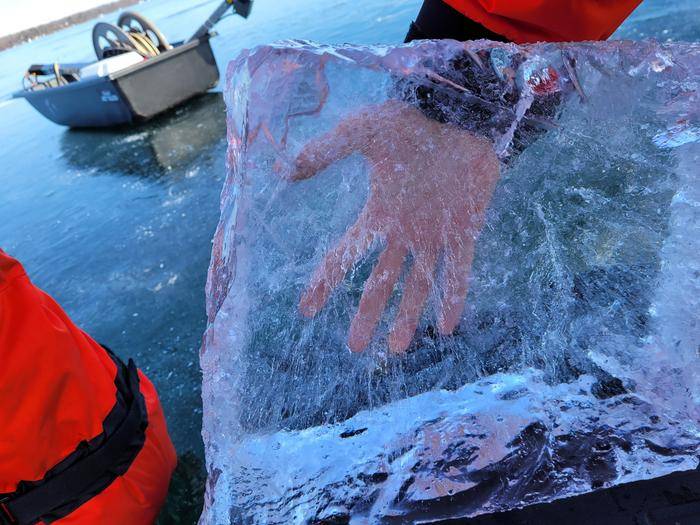Summary: Research from York University reveals that warming winters are degrading lake ice quality, posing increased risks for winter activities and impacting aquatic ecosystems.
Estimated reading time: 7 minutes
As winter temperatures rise due to climate change, a new study from York University suggests that the safety of frozen lakes may be more precarious than previously thought. The research, published in Nature Reviews Earth & Environment, indicates that warming winters are not only affecting ice thickness and duration but also its quality, potentially making it unstable and unsafe for human activities.
The Changing Nature of Lake Ice
Traditionally, lake ice forms in two primary layers: white ice and black ice. Black ice, which is clear and dense with few air pockets, provides strength and stability. White ice, on the other hand, is more opaque and contains more air bubbles, making it less stable and weaker.
Lead author and York Postdoctoral Fellow Joshua Culpepper explains the problem: “You might get periods of time when people are on the ice and they think it’s safe, but it really isn’t. It’s not sufficiently thick enough given the changes in the quality.”
The study found that unpredictable and warmer winter weather is creating thinner layers of black ice and sometimes a corresponding thicker layer of white ice. This combination can lead to treacherous conditions for various winter activities, including skating, ice fishing, and ice road transportation.
Rethinking Ice Safety Guidelines
The traditional rule of thumb that 10 centimeters (about 4 inches) of ice thickness is safe for human activity may no longer be reliable. York Professor Sapna Sharma, a co-author of the study, recommends doubling the usual recommended thickness to at least 20 cm if there is only a thin layer of black ice present.
“For a human to go out on the ice to skate or play, that requires about 10 centimeters or four inches of black ice…but what we’re seeing and what we’re predicting is that climate change is contributing to more white ice conditions,” Sharma states.
Implications for Northern Communities
The changing ice conditions have far-reaching implications, particularly for northern communities that rely on ice roads for winter transportation. The study predicts a potential 95 to 99 percent loss in winter ice road transportation infrastructure without significant adaptations for ice safety.
This could result in remote communities being cut off from essential supplies, including food, medicine, and other necessities during winter months.
Impact on Aquatic Ecosystems
Beyond human safety concerns, the degrading ice quality also affects life beneath the frozen surface. The increase in white ice is blocking more sunlight from penetrating the water, potentially compromising the health of aquatic ecosystems.
Culpepper notes, “The diminishing quality of ice is also affecting life below, the amount of nutrients available for fish and other aquatic life, such as invertebrates, as well as phytoplankton which needs light for photosynthesis.”
Urgent Need for More Research
The study highlights a significant gap in our understanding of lake ice quality changes. Culpepper emphasizes the need for more comprehensive data collection: “What’s needed is regular measurements of ice quality, including black and white ice thickness, throughout the Northern Hemisphere.”
As our climate continues to warm, understanding these changes in lake ice quality will be crucial for adapting winter activities, protecting northern communities, and preserving aquatic ecosystems.
Quiz
- What are the two primary layers of lake ice mentioned in the article?
- How much black ice thickness is traditionally recommended for human activity on frozen lakes?
- What percentage loss in winter ice road transportation infrastructure is predicted without meaningful adaptations?
Answer Key:
- Black ice and white ice
- 10 centimeters (about 4 inches)
- 95 to 99 percent
Further Reading
- Nature Reviews Earth & Environment – Lake ice quality in a warming world
- Climate Change and Freshwater Ecosystems
- National Snow and Ice Data Center – Arctic Sea Ice News & Analysis
Glossary of Terms
- Black ice: Clear, dense ice with few air pockets, providing strength and stability to frozen lake surfaces.
- White ice: Opaque ice filled with more air bubbles, generally weaker and less stable than black ice.
- Ice phenology: The timing of ice formation, duration, and break-up on water bodies.
- Load bearing capacity: The amount of weight that ice can safely support without breaking.
- Ecosystem services: The benefits that humans derive from natural ecosystems, including recreational activities on frozen lakes.
- Phytoplankton: Microscopic plants that live in water and form the base of many aquatic food chains.
Enjoy this story? Get our newsletter! https://scienceblog.substack.com/


